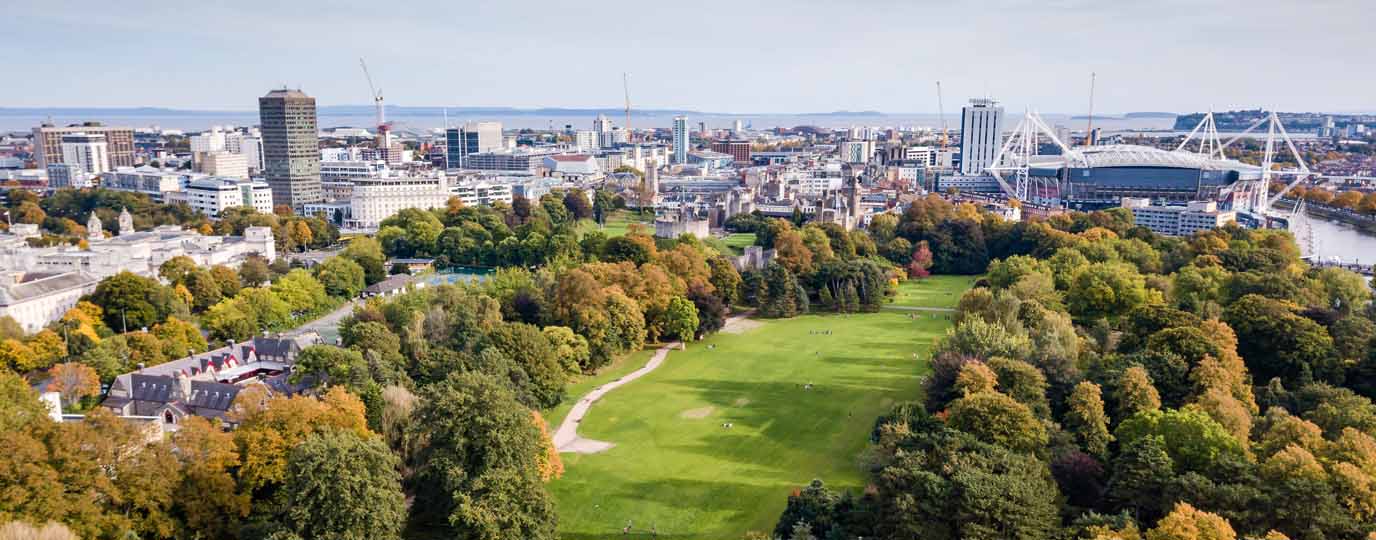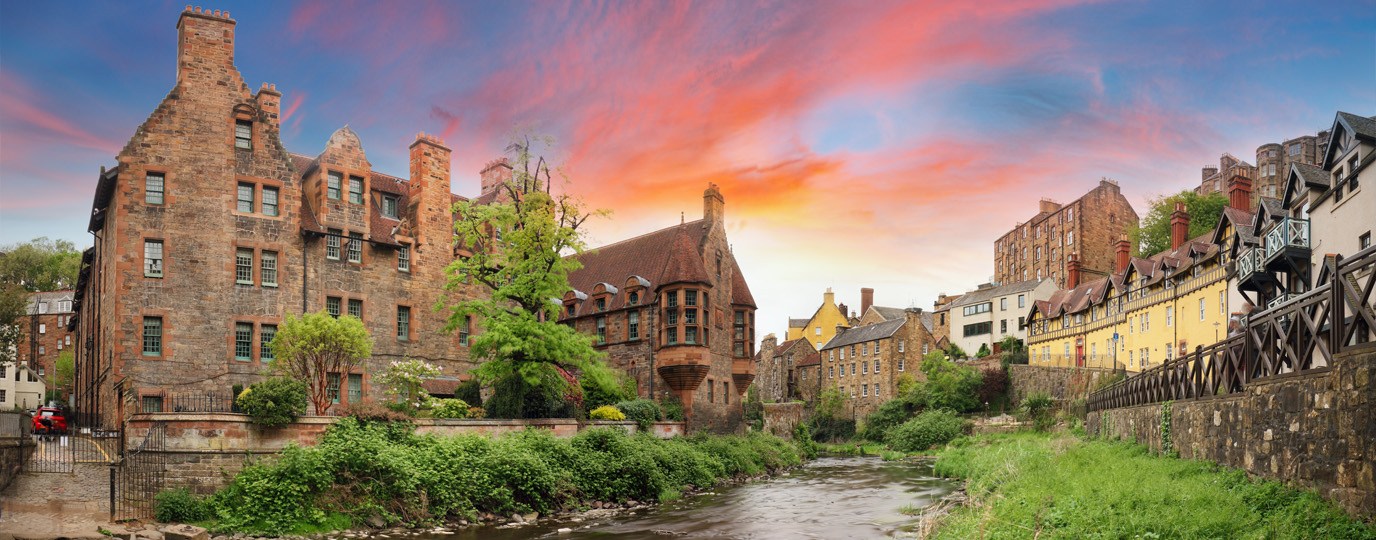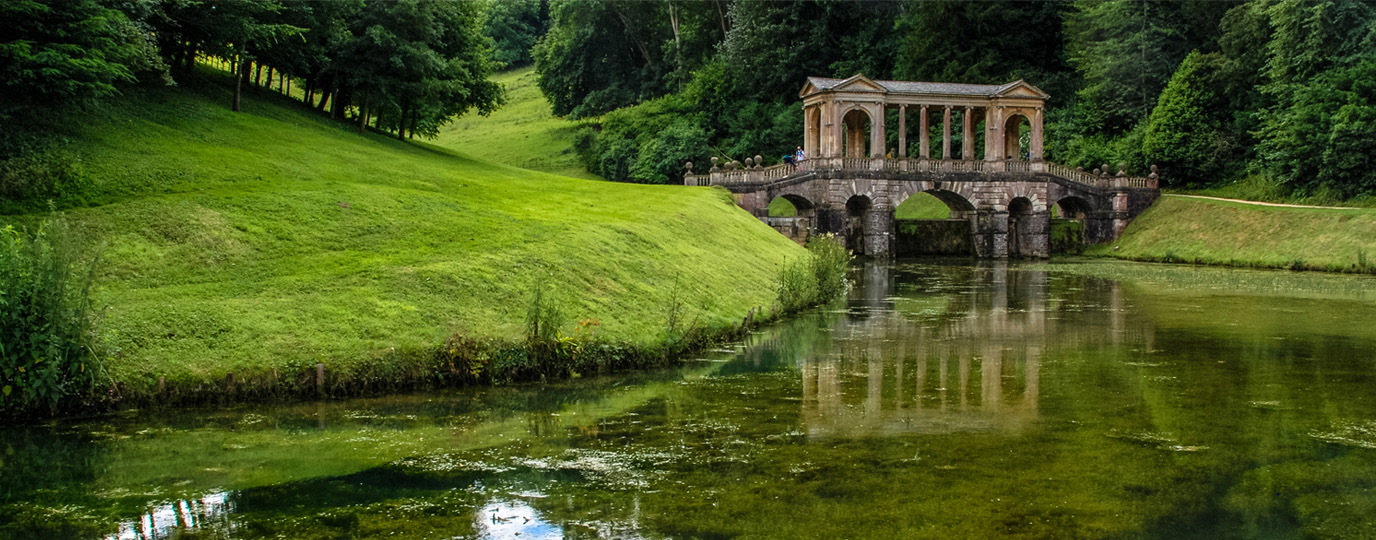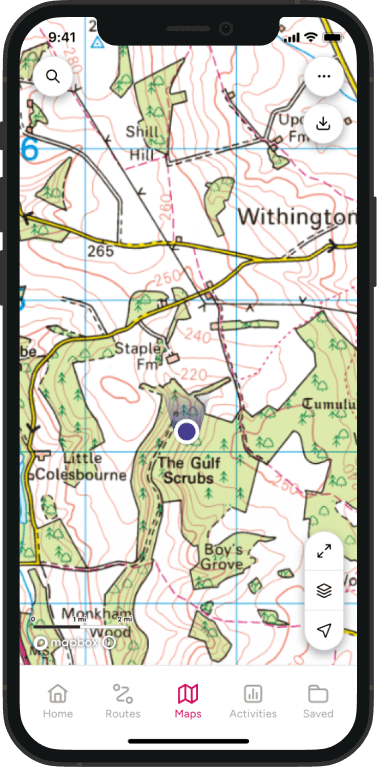Aberdeen Nature Walks in and Around the City
Aberdeen might be known for its granite streets and bustling city life, but it’s also surrounded by green spaces perfect for escaping the bustle and taking a refreshing walk.
Whether you’re craving a quiet park, a coastal breeze, or a woodland escape, there are plenty of places where you can enjoy fresh air without venturing far. These spots offer a chance to slow down, stretch your legs, and immerse yourself in nature, all within an hour or less from the city centre.
From landscaped gardens and historic parks to sandy beaches and forest trails, each destination brings its own charm. With so many options just a bus ride away, finding space to breathe and reconnect with nature has never been easier.
If you’re unable to visit Aberdeen, for similar walking ideas in and around other cities, take a look at other locations in our city walks series. Below are a just few of the cities included in our series:
Where are the best city walks in Aberdeen?
Donmouth Local Nature Reserve

Nearest bus stop: Beach Esplanade
Situated where the River Don meets the North Sea, Donmouth Local Nature Reserve offers a tranquil escape just a short distance north of Aberdeen’s city centre.
Designated as a Local Nature Reserve in 1992, it spans estuary mudflats, sandy beaches, dunes, and small areas of woodland, creating a rich habitat for wildlife. Bird enthusiasts will find plenty to admire, with waders, terns, and waterfowl frequenting the area throughout the year, while seals often rest on the sand spit near the river mouth.
For those seeking fresh air, Donmouth Local Nature Reserve is ideal for walking and nature observation. Its well-maintained paths allow you to enjoy leisurely strolls along the riverbank, through dunes, and across open coastal landscapes, offering scenic views and opportunities to spot wildlife in its natural environment. The area’s peaceful atmosphere makes it perfect for a relaxing walk, whether you’re looking for a short outing or a longer exploration. With amenities such as parking and seasonal ranger-led activities, it’s a convenient and rewarding destination for anyone wanting to experience Aberdeen’s natural beauty on foot.
Scotstown Moor
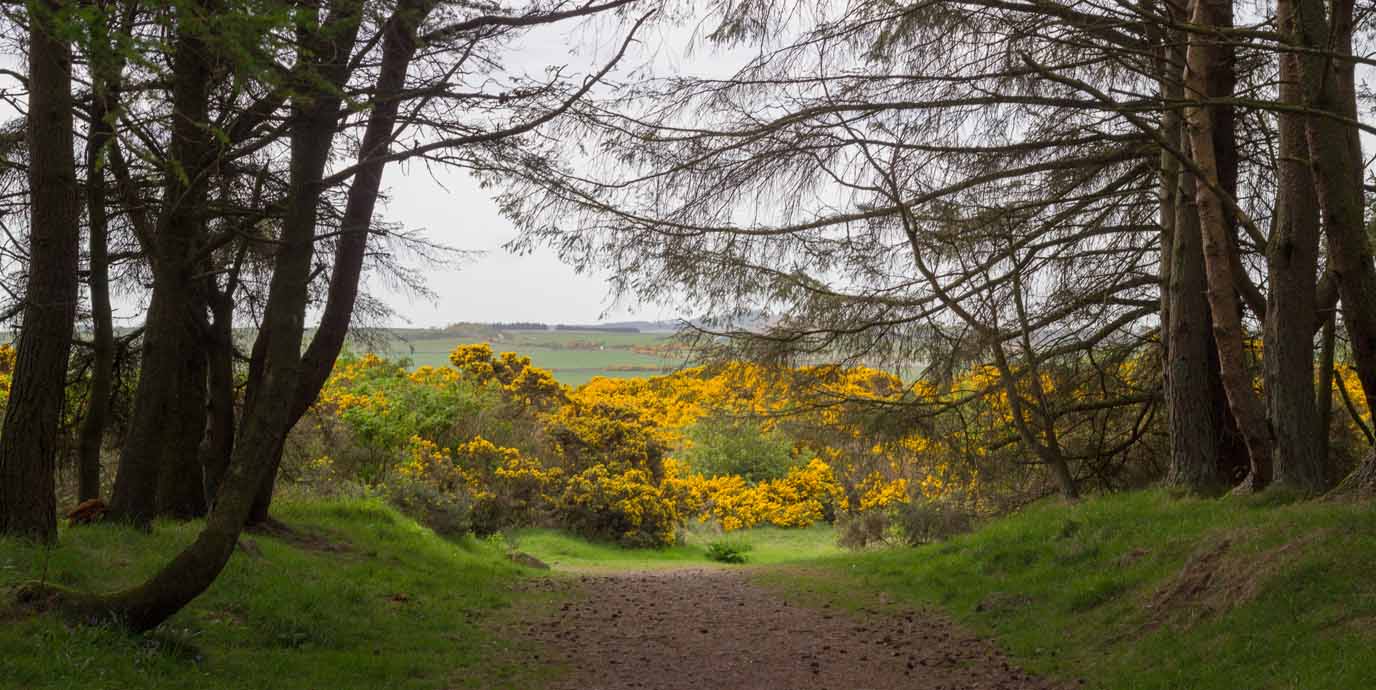
Nearest bus stop: Dubford Park
Located about four miles north of Aberdeen centre, Scotstown Moor offers a peaceful green space surrounded by residential areas ideal for a walk on the edge of the city.
Covering over 200 acres, it was designated as a Local Nature Reserve in 1994 and is notable for containing the city’s only example of species-rich lowland heath. Historically, Scotstown Moor was part of a much larger expanse of heath and bogland around Aberdeen, preserved for centuries under a system of common land rights that allowed public access and grazing. During the 20th century, parts of the site were reclaimed for agriculture and later threatened by development, but conservation efforts secured its status as a protected area.
Today, Scotstown Moor is an inviting destination for anyone seeking a natural escape. Its open heathland, patches of grassland, and wet bog areas provide a varied landscape for walking and wildlife watching. You can enjoy leisurely strolls or more energetic walks while taking in views of gorse, heather, and seasonal wildflowers.
The reserve is home to diverse birdlife and other species, such as dragonflies, making it ideal for nature spotting along the way. With amenities such as parking and a generally quiet atmosphere, it’s a convenient spot for anyone looking to experience Aberdeen’s countryside without leaving the city.
Aberdeen Beach

Nearest bus stop: Beach Boulevard
Stretching along the city’s eastern edge, Aberdeen Beach has been a popular spot for recreation for centuries.
Historical records mention sea bathing here as early as the 16th century, and by the 19th century, facilities such as bathing machines and later indoor baths made it a fashionable destination. Today, Aberdeen Beach remains a focal point for leisure, while its golden sands are protected by groynes to combat erosion. The area continues to evolve with conservation and improvement projects.
As a location to escape the city, the beach offers an excellent setting for walking and enjoying nature. A long esplanade runs parallel to the shore, providing a level path ideal for leisurely strolls with views of the North Sea. You can experience the invigorating sea air, watch kite surfers and windsurfers, or spot wildlife such as seabirds and, occasionally, dolphins offshore.
The adjacent grassy areas and open spaces add variety to the experience, making it suitable for both short walks and extended outings. With easy access from the city centre and facilities like cafés and parking nearby, Aberdeen Beach is a convenient and scenic choice for anyone looking to combine exercise with coastal scenery.
Take a look at a route that follows along Aberdeen Beach to Footdee beach before venturing into the city. Here it explores the historic docks and section of the city before looping back (passing a trig pillar for those looking to bag one!).
Johnstone Gardens

Nearest bus stop: Craigburn Park
Nestled to the west of Aberdeen’s, Johnstone Gardens offers a peaceful retreat from the city’s bustle.
Originally part of the Johnston House estate, the grounds were gifted to the city in 1936 and transformed into a public park. People now celebrate the site for its award-winning horticultural design, which features streams, ponds, waterfalls, and rockeries. Over the years, Johnston Gardens has helped Aberdeen earn multiple Britain in Bloom accolades, including winning the city category in 2025, and remains a cherished green space.
In the heart of the city, the gardens are ideal for leisurely walks and nature appreciation. Winding paths lead you through vibrant displays of rhododendrons, azaleas, heathers, and alpine plants, with seasonal blooms creating a colourful backdrop. The tranquil ponds attract ducks and moorhens, while benches and shaded corners invite quiet reflection. Its compact size makes it perfect for a short stroll, photography, or simply enjoying the calming sounds of water features.
Seaton Park
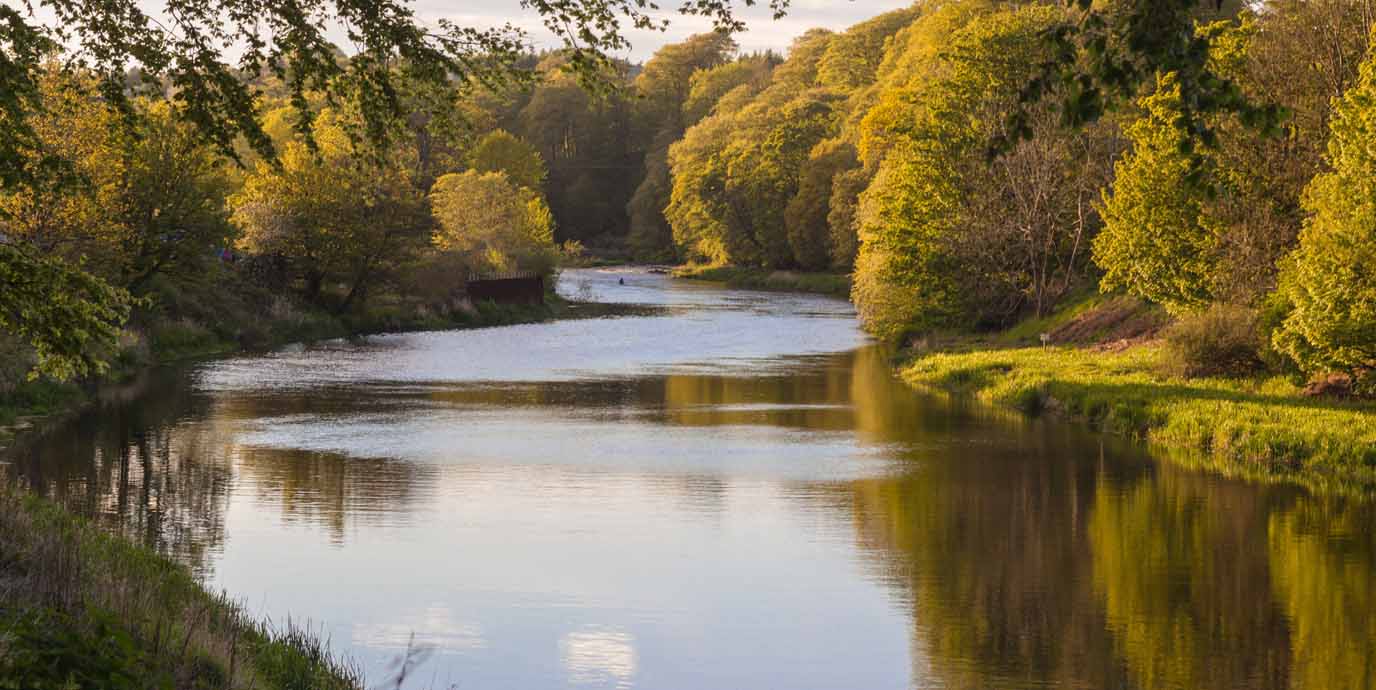
Nearest bus stop: Lord Hay’s Road
Set on the banks of the River Don in Old Aberdeen, Seaton Park has been a public park since 1947. Before that, the land formed part of Seaton House grounds, a historic property that eventually fell into decline and was lost to fire in the 1960s.
Today, Seaton Park retains strong links to Aberdeen’s heritage, with features such as the Wallace Tower, relocated here in the 1960s, and a Bronze Age motte. Its proximity to St Machar’s Cathedral and the medieval Brig o’ Balgownie adds further historical depth, making the park a unique blend of nature and history.
With plenty of space to explore, Seaton Park offers an ideal setting for walking and relaxation. Paths wind through formal flower beds, walled gardens, and open lawns, while riverside trails provide scenic views of the Don and opportunities to spot wildlife in the wetland area created to support biodiversity. Seasonal floral displays, mature trees, and tranquil corners make it perfect for leisurely strolls, photography, or simply enjoying the fresh air.
Follow a route that takes you through Seaton Park, past the cathedral and over the River Don via the Brig o’ Balgownie.
Greyhope Bay and Girdle Ness Lighthouse

Nearest bus stop: North Balnagask Road
Perched on the southern edge of Aberdeen Harbour, this rugged stretch of coastline combines dramatic scenery with rich maritime heritage.
Greyhope Bay offers sweeping views of the North Sea and is widely regarded as one of the best places in the UK to spot bottlenose dolphins from land. Its sandy shores and rocky outcrops create a picturesque setting for leisurely walks, complemented by the nearby Torry Battery, a historic fortification dating back to the mid-19th century.
The area’s history includes the wreck of the whaling ship Oscar in 1813, a tragedy that prompted the construction of Girdle Ness Lighthouse two decades later. Today, the beach and its surroundings provide a tranquil escape from the city, with opportunities for wildlife watching and photography in a setting steeped in coastal history.
Walking here is a rewarding experience, with paths that follow the headland and offer panoramic views of Aberdeen Harbour, the open sea, and the lighthouse itself. Girdle Ness Lighthouse remains an iconic landmark, its white tower standing 37 metres high above the cliffs. Although the lighthouse does not open to the public, it adds character to the coastal walk, which frequent wildlife sightings enrich.
Countesswells Woods
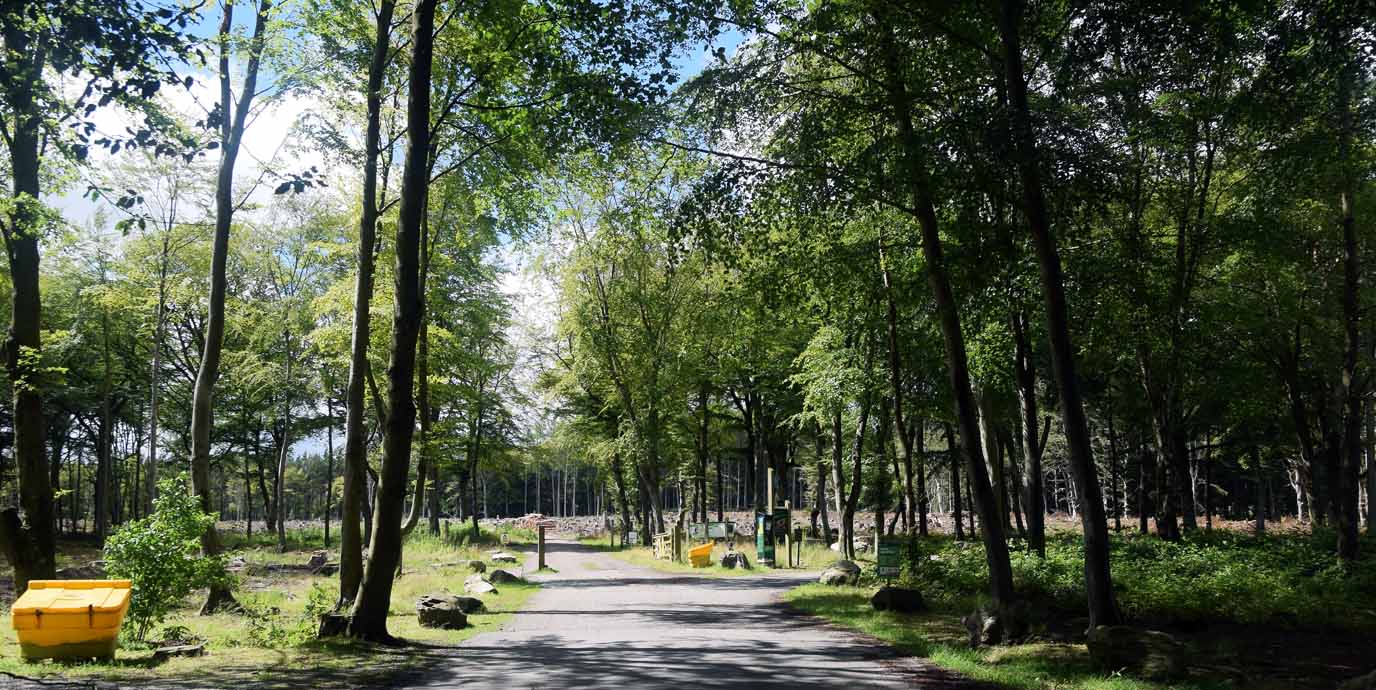
Nearest bus stop: North Countesswells Road
Located on the western outskirts of Aberdeen, Countesswells Woods provides a tranquil escape from the city and is part of the green belt that surrounds Aberdeen.
Historically, the forest was once part of the Countesswells estate and includes remnants of old farmland such as rig-and-furrow patterns and drystone walls. Many of the beech trees were planted in the late 19th century with the intention of producing timber a century later, and today the forest is managed for recreation and conservation. Storm damage in recent years has led to restoration efforts, with new plantings of native species like oak and rowan helping to maintain biodiversity.
For outdoor enthusiasts, Countesswells offers excellent opportunities for walking with a number of designated trails. Wide forest paths wind through mature conifers, mixed woodland, and open viewpoints overlooking Aberdeenshire farmland and the city beyond. The varied terrain includes gentle slopes and occasional muddy sections, making it suitable for casual walkers. Wildlife spotting is a highlight, with chances to see red squirrels and seasonal wildflowers along the way.
Kirkhill Forest

Nearest bus stop: Chapelcroft
Situated just northwest of Aberdeen, this Kirkhill Forest offers a peaceful retreat from the city and is part of the region’s green belt.
Covering around 800 acres, Kirkhill Forest is a working forest managed for timber and recreation, with a mix of Scots pine, birch, and oak creating a diverse habitat. Historically, the area includes traces of an Iron Age hillfort and features the 19th-century Tappie Tower, a stone folly built as a viewing point on Tyrebagger Hill.
Kirkhill Forest is ideal for walking amongst nature. Its network of wide trails winds through dense woodland and open viewpoints, offering varied terrain suitable for strolls or longer walks. You can enjoy panoramic views toward Aberdeen and Bennachie, spot wildlife such as red squirrels and roe deer, and explore interpretive panels that highlight the forest’s ecology and history.
Don’t forget to head up Tyrebagger hill to bag a trig point!
Hazlehead Park
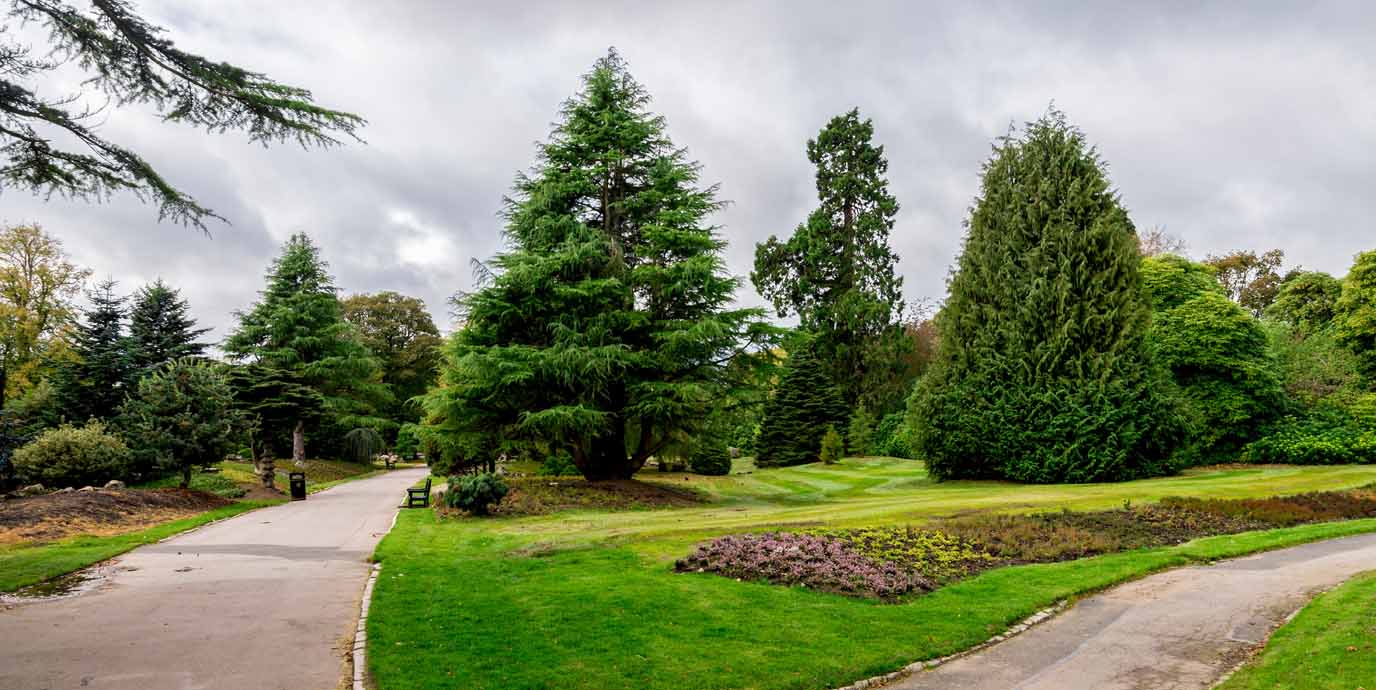
Nearest bus stop: Queen’s Grove
Set within Aberdeen’s western outskirts, Hazlehead Park was once part of the royal hunting forests of Stocket and became public land in 1920 after being purchased from the Hazlehead estate.
Originally given to the city by Robert the Bruce in 1319 as part of the ‘Freedom Lands’, Hazlehead Park has evolved into one of Aberdeen’s largest green spaces, covering around 440 acres. Features such as formal rose gardens and memorial sculptures reflect its heritage.
Hazlehead Park offers an exceptional setting for walking and nature appreciation. You can explore extensive woodland paths, manicured gardens, and open parkland, with opportunities to spot red squirrels. The park’s varied landscapes make it suitable for walks of any length. Its peaceful environment and well-maintained trails provide a refreshing escape from the city and an ideal location to walk through Glasgow.
Scolty Hill
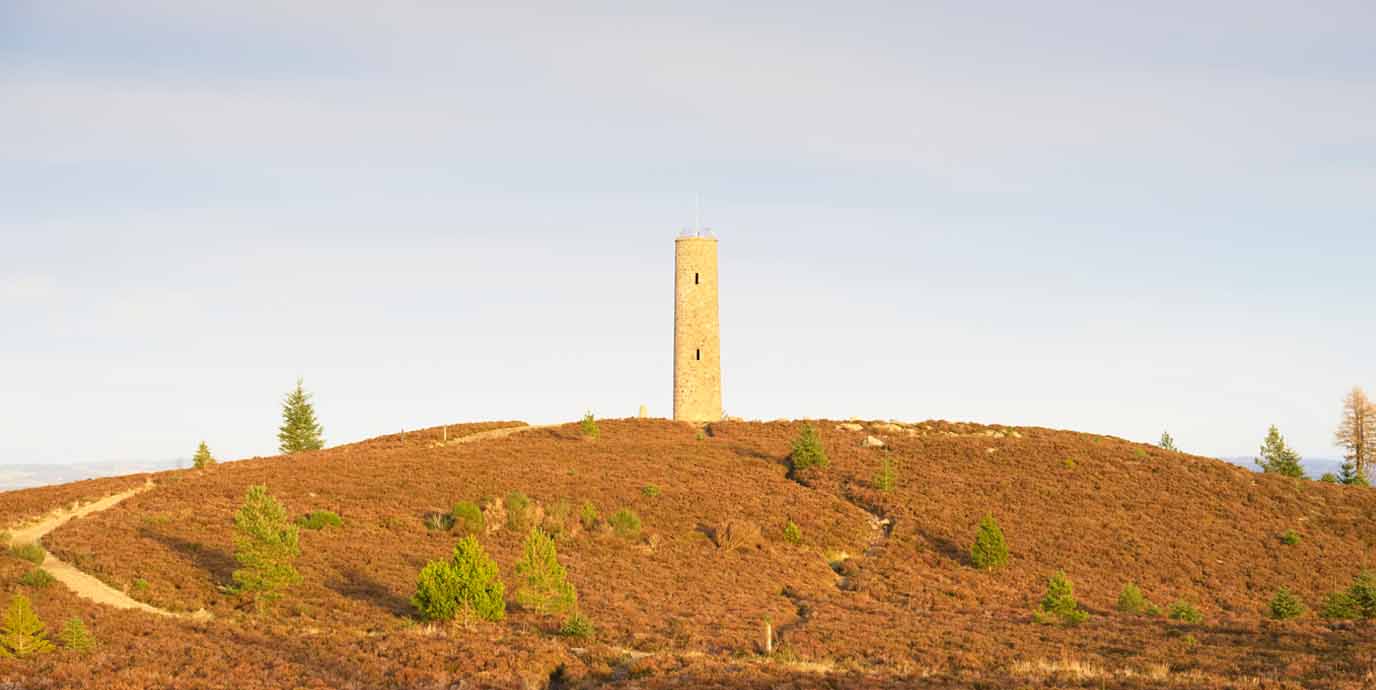
Nearest bus stop: Dee Street (Banchory)
For something a little further afield and just an hour away from Aberdeen by bus, Scolty Hill near Banchory makes an excellent choice for longer day out.
Rising to about 299 metres, Scolty Hill is crowned by a 20-metre tower built in 1840 as a memorial to General William Burnett, who fought alongside Wellington in the Napoleonic Wars. The tower can often be climbed via a spiral staircase, rewarding you with panoramic views over Deeside, the Grampian Mountains and Cairngorms, and glimpses of Aberdeen and the North Sea on clear days. The surrounding woodland and moorland reflect the area’s farming and forestry heritage, with old stone walls and mossy burns adding character to the landscape.
Walking opportunities here are plentiful, with trails winding through quiet forests and up to the open summit for spectacular vistas. The climb is steep in places but short, making it accessible for most walkers. You can often spot wildlife such as red squirrels and woodpeckers along the way.
A highlight of a visit is pausing at the Falls of Feugh on your way from Banchory, where impressive views over the water and surrounding hills set the tone for the adventure. If you have more time, you can also head further into the woodland of Blackhall Forest for longer walking trails.
Where can you find more nature walks in Aberdeen?
There are countless more places waiting to be discovered in and around Glasgow to offer a pause from the city. If you’re looking for further ideas within a bus or train ride away, consider these other green spaces:
- Tollohill Wood – a peaceful woodland on Aberdeen’s edge, perfect for quiet walks among mature trees and wildlife.
- Kincorth Hill Local Nature Reserve – open heathland with sweeping city views and plenty of space for nature walks.
- Union Terrace Gardens – a central green oasis with landscaped gardens ideal for a relaxing stroll in the heart of Aberdeen.
- Cruickshank Botanic Garden – a hidden gem near Old Aberdeen offering tranquil paths through diverse plant collections.
- Aberdeenshire Coastal Trail – stunning seaside scenery and fresh sea air make this coastal stretch ideal for walkers.
- Duthie Park – a vibrant city park with formal gardens, ponds, and glasshouses for a scenic and easy walk.
- Westfield Park – a quiet neighborhood park with open lawns and tree-lined paths for a short, refreshing walk.
- Westburn Park – spacious grounds with mature trees and play areas, perfect for a leisurely stroll or family outing.
Do you want to go a little further than Aberdeen for a walk?
Beyond Aberdeen, Scotland has many more opportunities for those seeking their next trip. If you’re looking to step from a city stroll into a countryside hike, prepare for adventure and take a look at our suggestions for more of where to go:
- RSPB Scotland Fowlsheugh – dramatic sea cliffs alive with thousands of nesting seabirds, perfect for a coastal wildlife walk.
- Forvie National Nature Reserve – sweeping sand dunes and estuary views offering a serene escape for nature lovers.
- Muir of Dinnet National Nature Reserve – a mix of lochs, woodlands, and geological wonders ideal for scenic walks and wildlife spotting.
- Glenmore Forest Park – ancient Caledonian pine forest with stunning mountain backdrops for a refreshing woodland walk.
- Cairngorms – vast landscapes of mountains, forests, and rivers providing endless opportunities for adventurous walks.
- Rocks of Solitude – a peaceful riverside gorge with dramatic rock formations and tranquil paths for a quiet nature walk.



